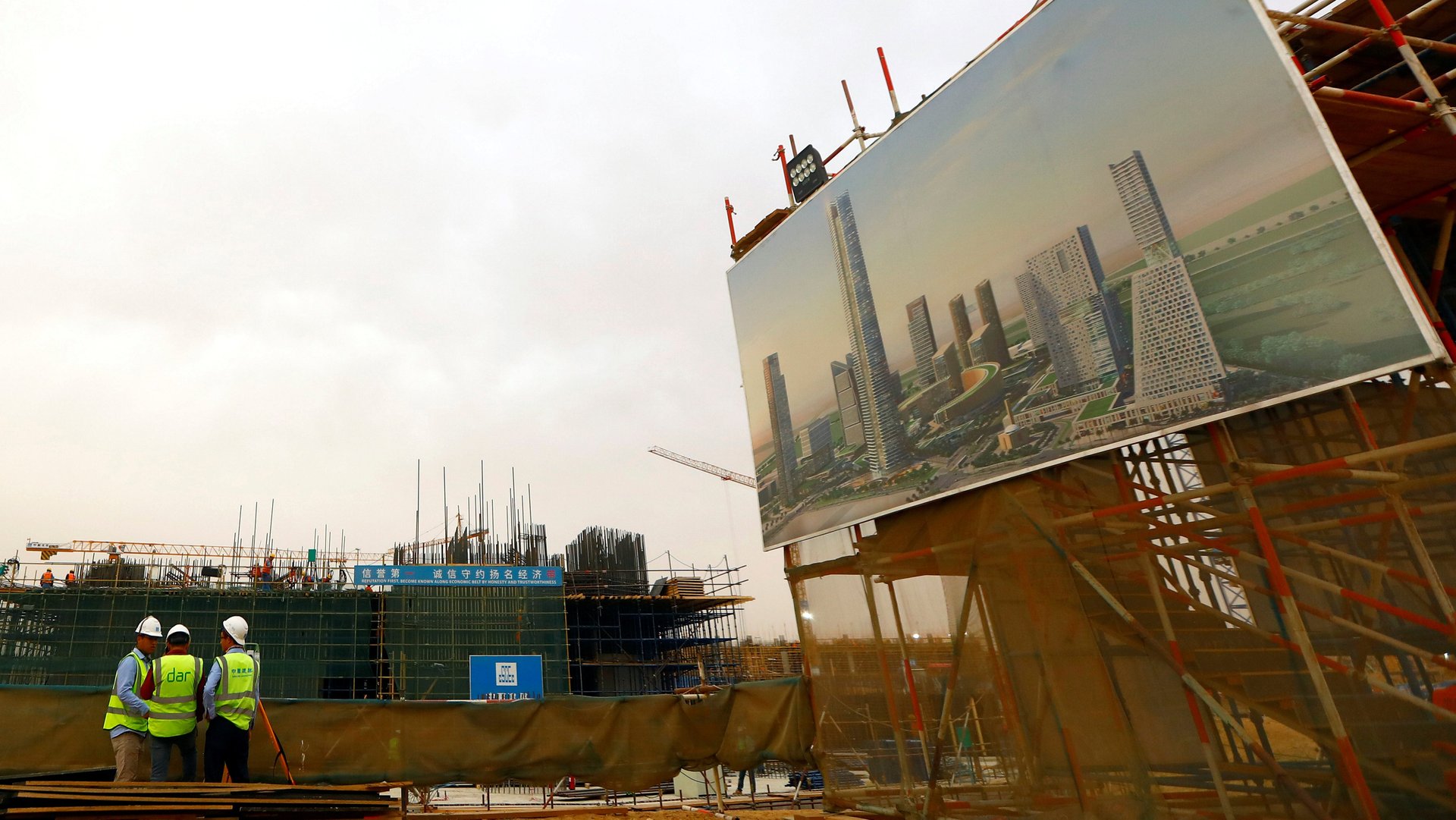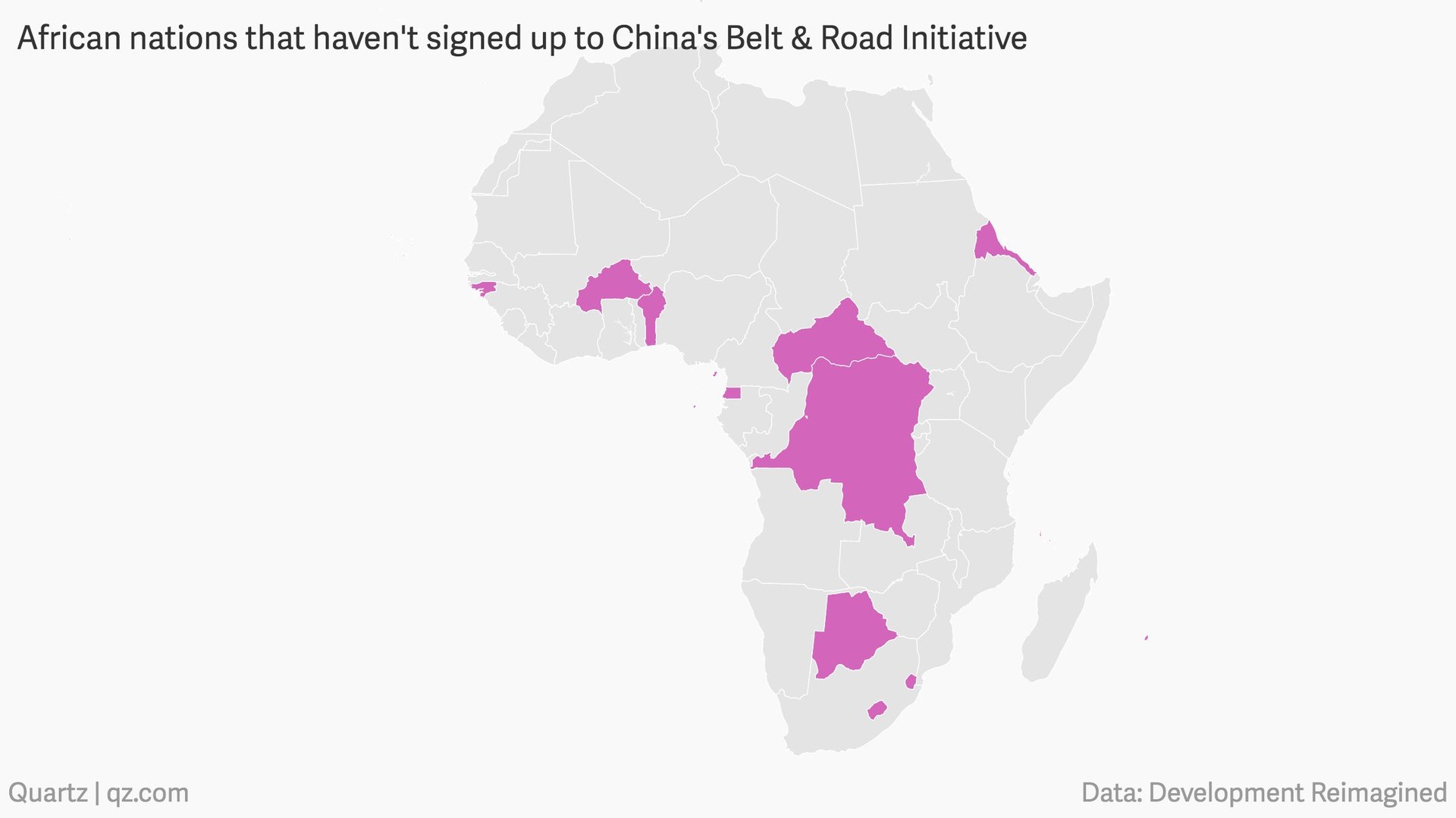These are the African countries not signed to China’s Belt and Road project
China’s Belt and Road Initiative is a vast transcontinental development project looking to improve connectivity among nations in Asia, Europe, and Africa. First announced by president Xi Jinping in 2013, dozens of countries have signed onto the scheme seeking to complement their infrastructural gaps, increase foreign investment, expand trade, and ultimately reduce poverty.


China’s Belt and Road Initiative is a vast transcontinental development project looking to improve connectivity among nations in Asia, Europe, and Africa. First announced by president Xi Jinping in 2013, dozens of countries have signed onto the scheme seeking to complement their infrastructural gaps, increase foreign investment, expand trade, and ultimately reduce poverty.
These include 40 out of Africa’s 55 states, who—along with the African Union—have signed memoranda of understanding with Beijing to finance and build modern highways, airports, and railways.
Yet six years since the BRI’s introduction, 14 African states are yet to jump on the bandwagon, raising queries about the profiles of these states and why they are holding out against Beijing’s assertive push into Africa. Geographically, these countries are spread across four regions in the continent: in the east (Eritrea, Mauritius), center (DR Congo, Central African Republic), west (Benin, Equatorial Guinea), and south (eSwatini, Botswana). All the countries in North Africa are part of the Belt & Road economic corridor.
While there’s no unifying justification why these countries are yet to sign MOUs with China on the BRI, there are political and economic factors leading them to adopt a wait and see mode. China’s own internal politics particularly play a key role in which nations have signed up and when, says Hannah Ryder, chief executive of Beijing-based consultancy Development Reimagined.

The landlocked monarchy of eSwatini (formerly Swaziland) hasn’t signed onto the BRI with China because it recognizes Taiwan, which Beijing considers an integral part of its territory. Both Sao Tome and Principe and Burkina Faso also resumed relations with China recently after severing ties with Taipei in 2016 and 2018 respectively.
Another factor to consider, Ryder argues, is that 7 out of the 14 nations—including DR Congo, CAR, and Benin—opposed China’s accession to the United Nations in 1971. And while top Chinese leaders continue to make high profile visits to the continent annually, she says none have been to either Comoros and Lesotho in the past decade.
Economics and governance provide some explanation too. Given countries like Mauritius, Botswana, and Equatorial Guinea are middle-income economies, Ryder says “they are waiting to see what the BRI might mean in practice for others before jumping into an MOU, as they are unclear of the implications.” And given the robust and stable political systems in states like Mauritius and Botswana, Chinese projects have come under much more scrutiny there than in other African countries.
Nonetheless, the list still includes poor or least developed states (Guinea Bissau, Malawi), nations under totalitarian rule (Eritrea), countries that receive high levels of private Chinese investment (Mauritius) and some with huge export linkages to China (DR Congo).
The BRI signatories were initially concentrated in East Africa, where Beijing was developing multi-billion-dollar mega infrastructural projects. These included railway lines in Kenya ($) and Ethiopia along with massive port projects in Djibouti.
Yet increasingly, Beijing has tried to market the BRI to more African states and articulate what signing the MOUs would entail in the long run. Ryder says that for China, “the optics of having more countries sign BRI MOUs were obvious: it does not come with a specific commitment but it signals a potentially stronger relationship.”
Yet getting more endorsements doesn’t guarantee the Belt and Road will be successful in Africa. Granted, with 14 fewer signatories, Beijing cannot say the whole African continent is on board with the BRI. But recent research has also shown that global geopolitical tensions, trade wars, and protectionism could shave as much as $800 billion off the scheme, impacting how much Africa benefits in the long run.
Ryder says African countries could leverage the BRI’s potential to their advantage. This could happen if the African Union created a “blueprint” for key cross-country and regional projects China should support. Member states who have signed onto the BRI should also publish a “China strategy” outlining their priorities and what they want to achieve from these partnerships. Countries should also share best practices among themselves so that they can learn from each other’s mistakes.
“Without these three steps,” Ryder concludes, “Africa won’t be able to make the most of BRI, or any other initiative that comes along.”
Sign up to the Quartz Africa Weekly Brief here for news and analysis on African business, tech and innovation in your inbox